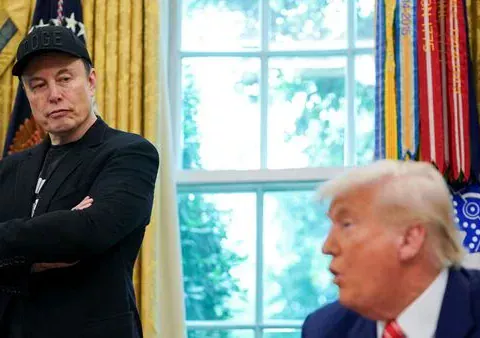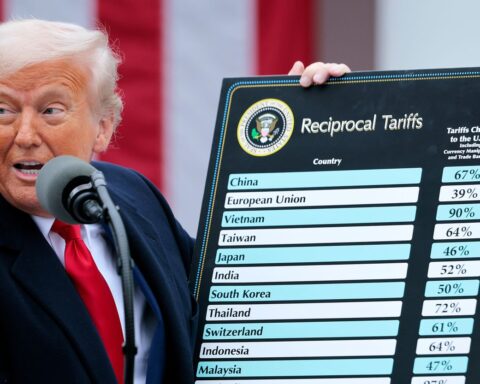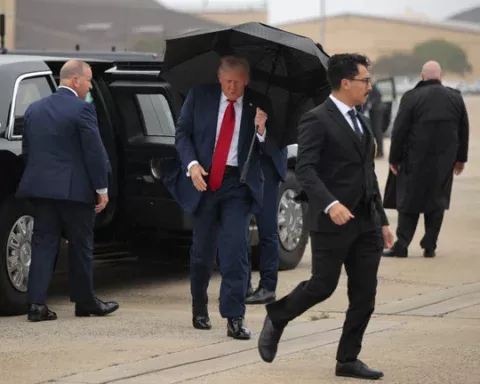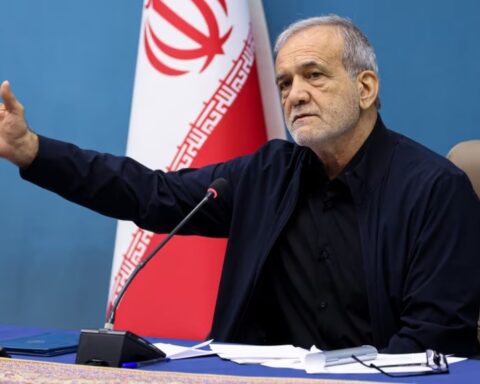President Donald Trump’s upcoming “Liberation Day” tariff transformation, set for April 2, has sparked widespread concern due to its inherent risks, threatening to destabilize the U.S. economy, strain international relations, and burden American consumers with higher prices.
Dubbed a pivotal moment in his second term, Trump’s plan to impose reciprocal tariffs on “all countries” aims to revive domestic manufacturing and generate trillions in revenue, but experts warn it could ignite a global trade war, exacerbate inflation, and alienate key allies. As the deadline looms, the uncertainty surrounding the policy’s scope and implementation has already sent shockwaves through financial markets, leaving the world on edge.
It’s April 1, 2025, and the anticipation of Trump’s tariff announcement has gripped global attention. The president has framed April 2 as “Liberation Day,” a term he’s used since his campaign to signal a break from what he calls unfair trade practices by nations like Canada, Mexico, and China. With promises of tariffs that could raise $6 trillion over a decade, according to White House trade adviser Peter Navarro, the administration is betting on a protectionist strategy to bolster American industries. Yet, the lack of clarity on the tariffs’ specifics, combined with Trump’s history of erratic policy shifts, has amplified fears of economic chaos and geopolitical fallout.
A Bold Vision Rooted in Decades of Trade Grievances
Trump’s tariff agenda is not a new idea but a culmination of his long-standing belief that the U.S. has been exploited by its trading partners. Since the 1980s, he has criticized nations like Japan for what he saw as unfair trade practices, a stance he carried into his first term with tariffs on steel, aluminum, and Chinese goods. Now, in his second term, Trump is doubling down, promising a sweeping set of reciprocal tariffs that match the duties other countries impose on U.S. exports. He’s pointed to examples like Brazil’s 18% ethanol tariff compared to the U.S.’s 2.5%, arguing that such disparities justify his aggressive approach.
The administration’s rhetoric is steeped in nationalistic fervor, with Trump claiming that these tariffs will usher in a new era of American prosperity. Navarro, speaking on Fox News, estimated that the tariffs could generate $600 billion annually, with auto tariffs alone bringing in $100 billion. Trump has dismissed concerns about rising consumer prices, telling NBC News, “I couldn’t care less,” if foreign automakers raise prices, asserting that Americans will simply buy U.S.-made cars. This confidence, however, clashes with the reality of global supply chains, where such a shift could take years and cost billions, if it happens at all.
Why Trump’s ‘Liberation Day’ Tariff Transformation Is So Risky
The risks of Trump’s “Liberation Day” tariff plan are manifold, touching on economic, political, and diplomatic fronts. Economists warn that the tariffs, which include a 25% levy on imported cars set to take effect on April 3, could significantly increase costs for American consumers. The Yale Budget Lab estimates that auto tariffs alone could raise new car prices by an average of $6,400, a 13.5% hike. This comes at a time when consumer sentiment is already souring, with the University of Michigan’s latest survey indicating rising fears of stagflation—a toxic mix of stagnant growth and high inflation.
Financial markets have reacted with volatility, reflecting the uncertainty surrounding Trump’s plans. The S&P 500 and Nasdaq have seen sharp declines, with Wall Street giant Goldman Sachs raising its recession odds to 35% and forecasting higher unemployment. The lack of clarity from the administration exacerbates this unease. White House Press Secretary Karoline Leavitt has said Trump will decide “what tariffs to impose,” but conflicting statements from advisers like National Economic Council Director Kevin Hassett, who offered no forward-looking guidance on Fox News, have left investors and businesses in the dark.
The Threat of a Global Trade War
Internationally, Trump’s tariff threats have put allies and adversaries alike on edge, raising the specter of a full-blown trade war. Canada, one of the U.S.’s closest trading partners, has already signaled retaliation, with Ontario Premier Doug Ford imposing a 25% surcharge on electricity exports to the U.S. in response to potential tariffs. Canadian Prime Minister Mark Carney called the measures a “direct attack,” warning of further strain on the USMCA trade pact. Mexico, too, faces renewed pressure, with its auto industry bracing for the 25% tariffs that could disrupt cross-border supply chains.
Europe is also preparing for a fight. The EU’s Ursula von der Leyen has cautioned that the tariffs would be “bad for businesses” and “worse for consumers,” while Germany’s Robert Habeck urged a unified European response. Japan and South Korea, key players in the auto and tech sectors, have seen their stock markets wobble as they anticipate the impact of Trump’s policies. The Guardian reports that some nations are considering exemptions, but Trump’s insistence on targeting “all countries” has left little room for negotiation, increasing the likelihood of retaliatory measures that could spiral into a broader economic conflict.
Economic Fallout: Higher Prices and Stagnant Growth
The economic implications of Trump’s tariff plan are profound, particularly for American consumers already grappling with high costs. The Washington Post notes that the tariffs could disproportionately harm lower-income families, who spend a larger share of their income on goods likely to see price hikes, such as cars and electronics. The proposed tariffs on lumber, copper, pharmaceuticals, and microchips could further drive up costs across multiple sectors, from construction to healthcare. Basic Fun, a toy manufacturer, told The New York Post that there is “no manufacturing base for toys in the U.S.,” meaning companies may have no choice but to pass on the costs to consumers.
Moreover, there’s no guarantee that these tariffs will achieve their stated goal of bringing manufacturing back to the U.S. CNN highlights that reorienting global supply chains would take years and require significant investment, potentially outlasting Trump’s tenure. Treasury Secretary Scott Bessent’s claim that “access to cheap goods is not the essence of the American Dream” may resonate with Trump’s base, but it ignores the reality that many Americans rely on affordable imports. The risk of stagflation looms large, with Goldman Sachs slashing its GDP growth outlook and warning of a 4.5% unemployment rate.
Political Risks and Domestic Backlash
Domestically, Trump’s tariff gamble is a political tightrope. While some U.S. manufacturers, particularly in steel and ethanol, support the tariffs as a way to level the playing field, others fear the consequences of a trade war. The University of Michigan’s consumer sentiment survey reflects growing unease, with Americans of all political persuasions souring on Trump’s economic policies. A Yahoo News poll found that most voters want the president to focus on lowering prices rather than imposing tariffs, a sentiment Trump has dismissed by saying he hopes foreign automakers raise prices to encourage domestic purchases.
Even within his own party, there’s skepticism. Republican Senator Ron Johnson of Wisconsin expressed concerns about the “double-edged sword” of tariffs, noting that manufacturers in his state are worried about rising costs and retaliatory measures. The New York Times editorial board has called Trump’s justifications for the tariffs—revenue, security, and leverage—nonsensical, warning that they could plunge the U.S. into its highest tariff levels since the 1940s. This domestic pushback could erode Trump’s political capital, especially if the tariffs lead to visible economic hardship.
A Capricious Leadership Style Adds to the Uncertainty
Perhaps the greatest risk lies in Trump’s unpredictable leadership style, which has already sown confusion and instability. CNN reports that Trump’s “capricious” approach to trade policy—marked by shifting deadlines, reversals, and contradictory statements—has damaged economic confidence. For instance, the administration initially imposed tariffs on Canada and Mexico, only to grant exemptions for certain goods within 48 hours, leaving businesses scrambling to adapt. This whiplash leadership, as CNN puts it, risks as much damage as the tariffs themselves, discouraging manufacturers from making long-term investments in the U.S.
Trump’s insistence on personally controlling the tariff rollout, with even close advisers like Hassett unable to provide clarity, further undermines stability. His comments to NBC News, where he expressed indifference to price hikes, have been described as “stunning” by analysts, highlighting a disconnect between the president and the economic realities faced by millions of Americans. As the April 2 deadline approaches, the lack of a coherent strategy threatens to amplify the tariffs’ negative impacts, both at home and abroad.
The High-Stakes Countdown to ‘Liberation Day’
As “Liberation Day” nears, the world braces for the consequences of Trump’s tariff transformation. The potential for a trade war, coupled with the risk of inflation and economic stagnation, has put the U.S. on a precarious path. While Trump’s vision of a revitalized American manufacturing sector is appealing to his base, the practical challenges and unintended consequences of his policies loom large. For American consumers, businesses, and allies, the coming days will test whether Trump’s gamble pays off—or plunges the global economy into chaos.
Focus Keywords: Trump tariffs, Liberation Day, tariff transformation risks, global trade war, U.S. economy, auto tariffs, consumer prices, economic uncertainty, international relations, April 2 2025

















